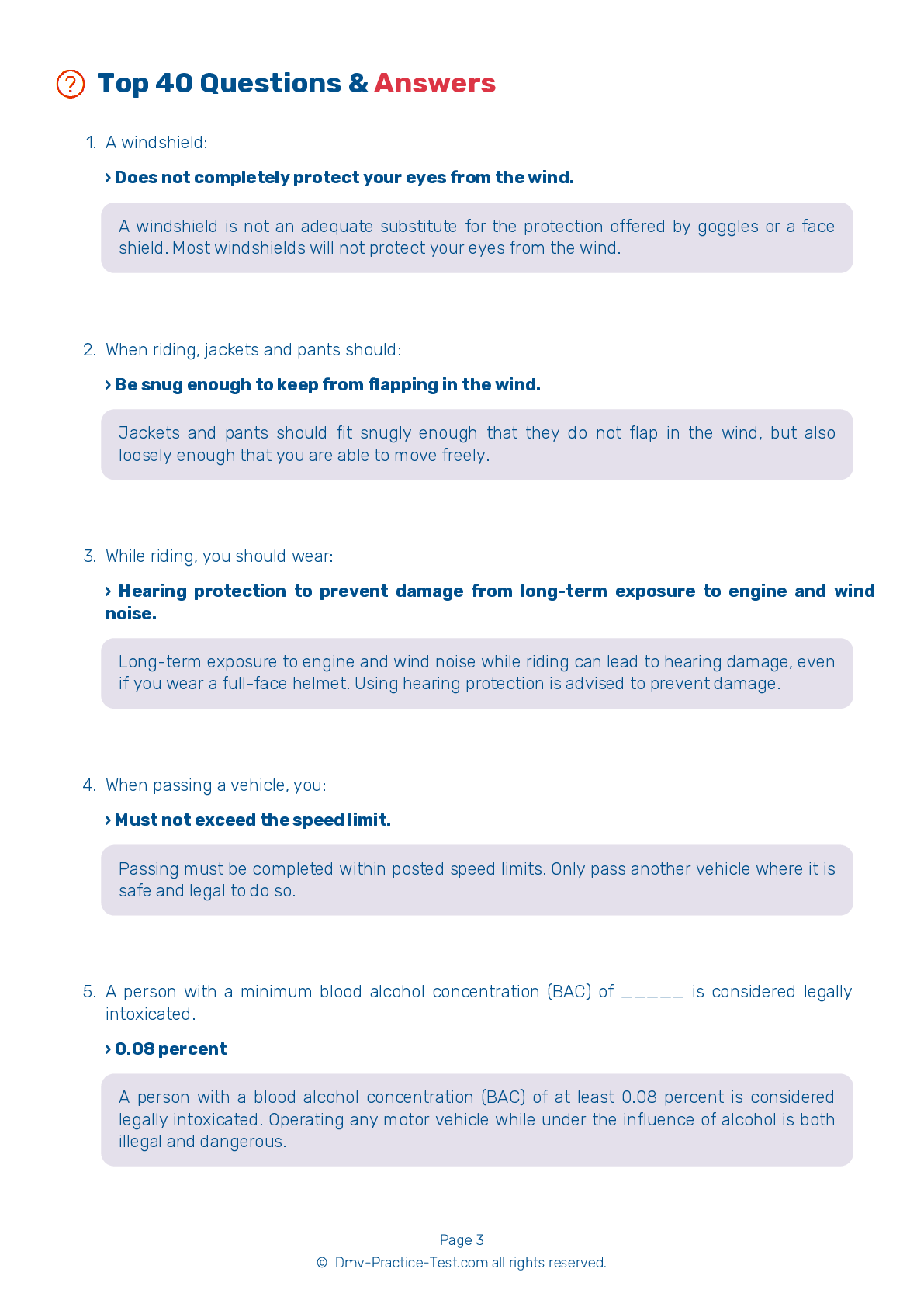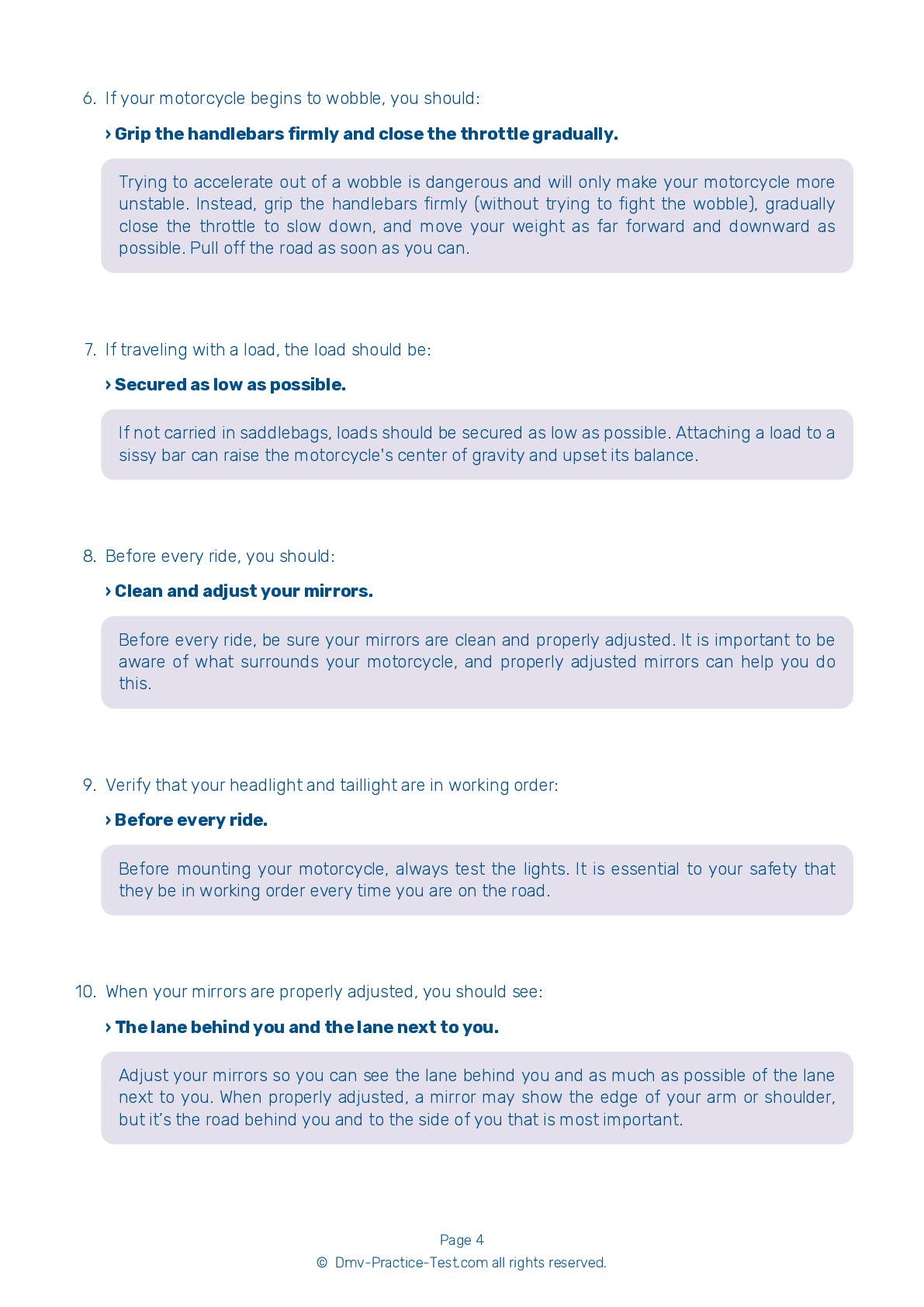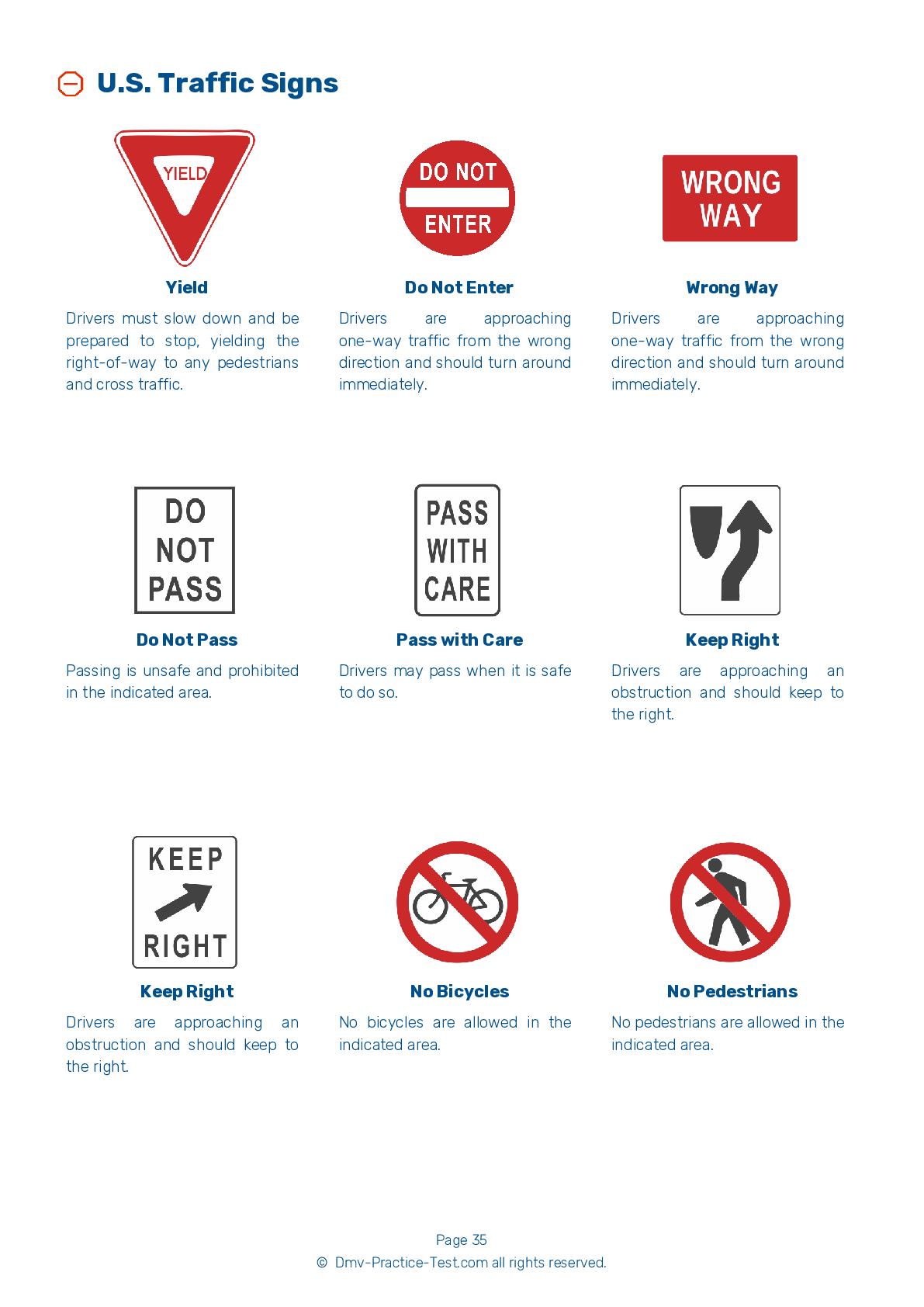Motorcycle Test | License OH 2025 | FREE Online Practice! #7 Page 3 of 5
Take this FREE motorcycle test (license in OH 2025) to check your knowledge of the road rules. To improve your results, download a motorcycle handbook online, study theory, and practice for free on our website. Still worried about how to get a motorcycle license in Ohio in 2025? Check our website for more sample tests, train as much as possible, and boost your grades!
17 . This sign shows one type of:
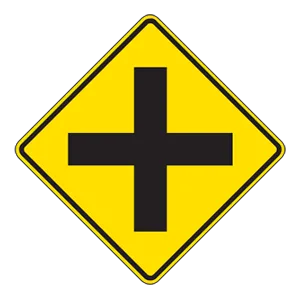
Warning signs are usually yellow with black markings. They alert you to conditions that are immediately ahead. This sign warns drivers that another road crosses the highway ahead.
18 . The best lane position for a motorcycle:
There is no single lane position that is best at all times. Choose the lane position that allows the most visibility and space around you. Change your lane position as traffic situations change.
19 . Before every ride, you should:
Perform safety checks before every motorcycle ride. Test your brake controls individually to make sure each one activates the brake lights.
20 . To shift up to a higher gear, you must:
To shift up to a higher gear, position your foot under the shift lever and lift.
21 . When riding, you should:
When making a turn, you should look through the turn to where you want to go. Turn just your head, not your shoulders, and keep your eyes level with the horizon.
22 . Your lane position should:
A properly chosen lane position should provide a number of benefits, including an increased ability to see others and to be seen. It should help you avoid wind blasts, other drivers' blind spots, and surface hazards. Your lane position should discourage other drivers from trying to share your lane and provide you with an escape route, should a hazard arise.
23 . When making a U-turn:
The front brake should not be used when making a U-turn because it could cause the bike to tip over. Instead, use the rear brake to control the speed of the bike in the U-turn.
24 . This white sign means:
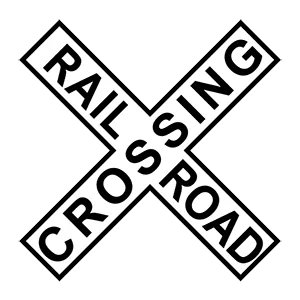
When approaching a railroad crossing, you must look, listen, slow down, and prepare to stop. Let any trains pass before you proceed.
See the exact questions that will be on the 2025 Ohio DMV exam.
99.2% of people who use the cheat sheet pass the FIRST TIME
Jeneen was tired of paying $5/gallon. She got herself a scooter that required the motorcycle license. She studyed the motorcycle test cheat sheet and passed her test the next day!
Christopher tells us how he knew nothing prior to obtaining the motorcycle study guide, and he only got one question wrong because he clicked on the wrong answer by mistake.

